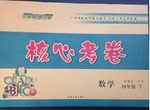题目内容
【题目】 Natural selection is the process by which one type of animal within a species thrives because of certain characteristics that make it more likely to live than others in its group. The history of the peppered moth(灰蛾)is an example of the natural selection process.
In 19th century England, certain types of peppered moths were able to better blend(融合)into their surroundings. During that time period, great changes were happening in Great Britain. The Industrial Revolution was part of this change, and with it came air pollution. Natural selection often takes hundred or even thousands of years to occur. For the peppered moth, this process occurred comparatively quickly.
At the beginning of the Industrial Age, most peppered moths in England were light-colored and covered with black markings, although a few moths had dark-colored wings. Because the light-colored moths blended into the light-colored bark on the trees, they could not be easily seen by birds that would eat them. As the air grew more polluted, however, tree trunks became covered with soot(烟煤)and became darker. The light-colored moths became easy for birds to see against the dark tree trunks. Since the dark-colored moths now had the advantage, their numbers grew. Within 50 years, the peppered moth went from being mostly light-colored to being mostly dark-colored.
In the 20th century, the air cleared up, and the peppered moth population changed again. As tree trunks lighted due to less soot in the air, light-colored moths once again had an advantage. Their numbers increased as soot levels declined. Depending on their environment, the coloration of the moths helped them to be “naturally selected” to survive.
【1】In 19th century, what was one of the causes of great changes in Great Britain?
A.The surroundings.B.The Industrial Revolution.
C.The natural selection.D.The peppered moth.
【2】What can we infer about the peppered moth’s natural selection process?
A.The length of time was unusual.
B.The soot levels in England did not affect it.
C.The color of peppered moths changed at random.
D.It was a good example of environmental protection.
【3】What’s the difference between light-colored and dark-colored moths?
A.Dark-colored moths were originally easy to see on trees.
B.Both kinds of moths preferred the dark-colored trees.
C.Birds failed to see light-colored moths.
D.The color of moths was unimportant.
【4】Which would most likely happen if soot darkened England’s trees again?
A.Birds would eat fewer moths.
B.Moths would not be able to stay alive.
C.Light-colored moths would disturb people’s life.
D.The population of dark-colored moths would increase.
【答案】
【1】B
【2】A
【3】A
【4】D
【解析】
本文为一篇说明文。介绍了灰蛾因为空气质量改变而改变自身斑点的自然选择现象。
【1】细节理解题。由第二段During that time period, great changes were happening in Great Britain. The Industrial Revolution was part of this change, and with it came air pollution. 在那段时间里,英国发生了巨大的变化。工业革命是这种变化的一部分,随之而来的是空气污染。可知,19世纪,英国发生巨大变化的原因之一是英国的工业革命。故选B项。
【2】推理判断题。由第二段For the peppered moth, this process occurred comparatively quickly.对于灰蛾来说,这个过程发生得太快。由此判断出,灰蛾自然选择过程的时间十分迅速,与众不同。故选A项。
【3】细节理解题。由第三段Because the light-colored moths blended into the light-colored bark on the trees, they could not be easily seen by birds that would eat them. 因为浅颜色的飞蛾与树上浅色的树皮混在一起,它们不容易被捕食它们的鸟发现。因此,深色的飞蛾在树上容易被鸟发现。故选A项。
【4】推理判断题。由第三段As the air grew more polluted, however, tree trunks became covered with soot(烟煤)and became darker. The light-colored moths became easy for birds to see against the dark tree trunks. Since the dark-colored moths now had the advantage, their numbers grew. 随着空气变得更加污染,然而树干被烟煤覆盖并变深。靠近深色树干的浅色飞蛾变得很容易被看见。因为深色飞蛾现在有了优势,它们的数量会增加。由此判断出,如果英格兰的树干颜色再次变深,那么深色飞蛾的数量会增加。故选D项。
细节理解题主要考查考生对文章中某一些特定细节或文章的重要实事的理解能力。它一般包括直接理解题和语义理解题两种。直接理解题的答案与原文直接挂钩,从阅读材料中可以找到。以本文第1小题为例,本题运用定位法:由第二段During that time period, great changes were happening in Great Britain. The Industrial Revolution was part of this change, and with it came air pollution. 在那段时间里,英国发生了巨大的变化。工业革命是这种变化的一部分,随之而来的是空气污染。可知,19世纪,英国发生巨大变化的原因之一是英国的工业革命。故选B项。

 小学同步三练核心密卷系列答案
小学同步三练核心密卷系列答案